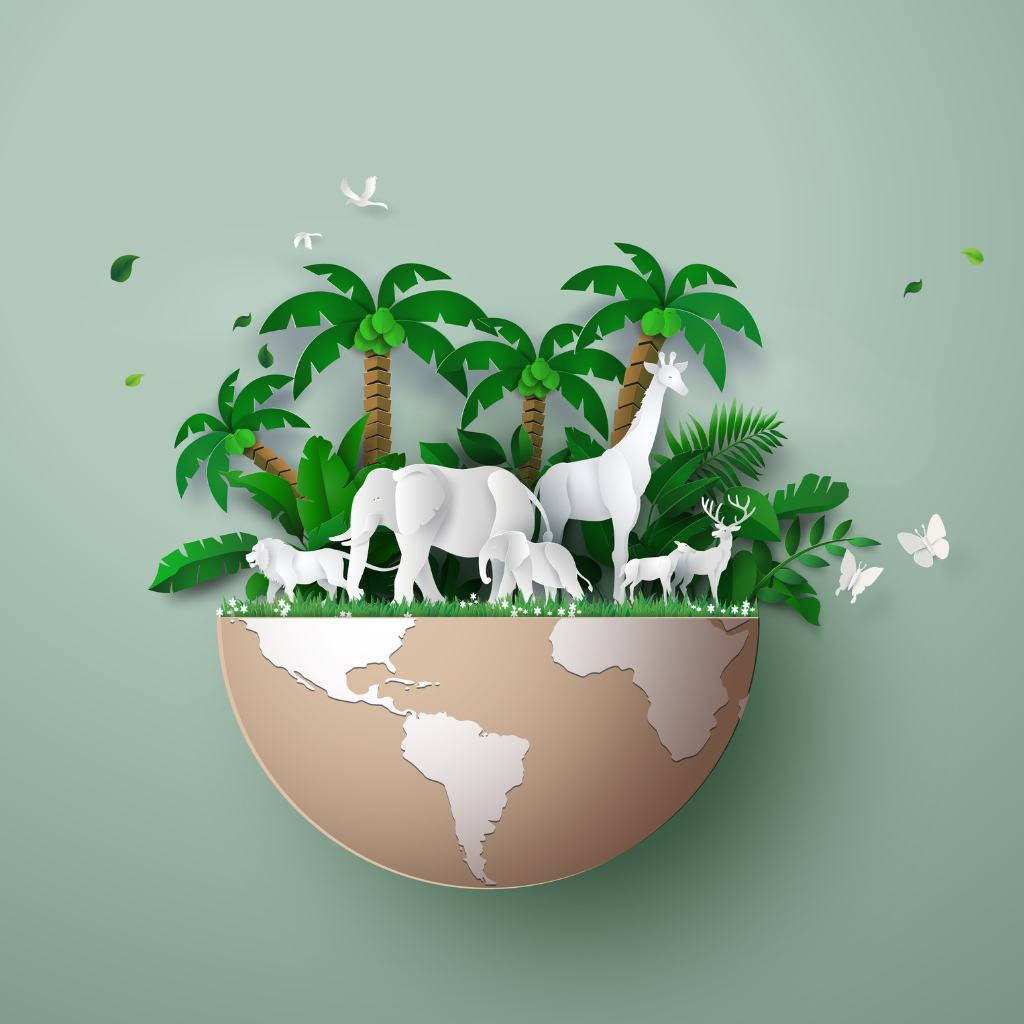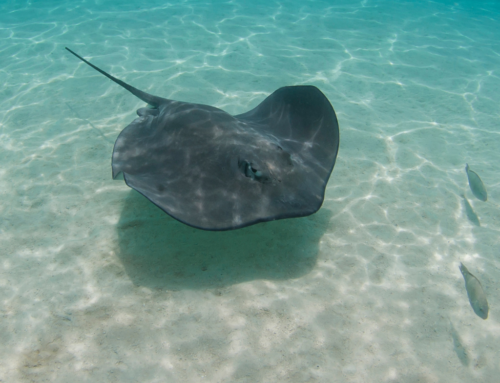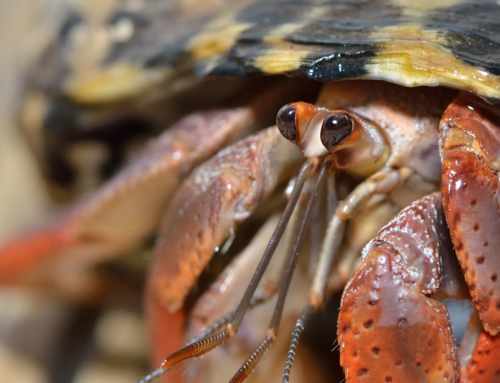
The impacts of climate change are affecting every corner of the planet. Fierce natural disasters, increasing temperatures, and rising ocean levels are threatening many human communities. It’s no secret that humans are the cause of the dramatic shift in our climate, and reducing carbon footprints is crucial. However, the effects of climate change can also be fought by protecting species to help protect the planet from the impacts of the current climate crisis.
Sea Otters Save Kelp Forests

Sea otters, arguably one of the cutest animal species of all time, combat climate change by protecting kelp forests. A classic sea otter snack, sea urchins, feed almost exclusively on sea kelp roots. Between their specific diet and ability to rapidly reproduce, sea urchins can quickly decimate this natural resource if sea otters are not there to keep them in check. Kelp forests are one of the best and most efficient absorbers of CO2 and forests guarded by otters absorb up to 12 times as much from the environment, removing up to 8.7 megatons annually. That’s the carbon emission equivalent of 6 million passenger cars!
Elephants Stomp Out the Competition

Elephants are essential to their environments throughout Africa and Asia as well. Their large size, and even larger appetites, are a shockingly effective way to help promote forest growth and health. As elephants tromp through the forest and savannah, they stomp down smaller trees and brush as well as ingest large amounts of leaves, grass, and other plant species. While it may seem that elephants cause harm to the forests, they provide essential ecosystem services. Just like gardeners pinch back branches and leaves to help a plant grow, Asian and African forest elephants provide better access to light and water for the plants and trees they leave behind, ultimately providing a greater carbon sink by promoting the growth of larger and healthier trees. Economist Ralph Chami has valued elephants’ greenhouse gas services at $150 billion. That’s a hell of a gardener’s bill!
Tapir Poop Saves Tropical Forests

The funny-looking tapir is essential for rebuilding decimated areas of the Amazon rainforest. The foragers stuff themselves with fruit and berries, resulting in an excess of seeds in their droppings. Coincidentally, South American tapirs prefer to spend time in areas of the forest that have been destroyed by forest fires or human deforestation. As a result, their poop allows the spread of essential plants to help natural resources to regrow in these areas.
Carbon Sinks with the Whales

Earth’s largest mammals absorb large amounts of carbon dioxide, up to 33 tons each, throughout their lifetime. Normally, when animals die, the carbon within their bodies is released back into the environment as they decompose. However, when whales naturally pass away their bodies sink to the ocean floor where the carbon becomes sediment. The carbon is not released back into the atmosphere due to the deep water. In addition, the ocean floor is fertilized for plant life. It’s a win-win!
In addition to storing literal tons of carbon dioxide, a whale’s poop floats to the surface of the ocean, providing the perfect breeding ground for phytoplankton, another essential species in combating climate change.
Phytoplankton Capture Carbon & Produce Oxygen

Phytoplankton, a microscopic marine species, have been around for over 200 million years and are essential for a healthy climate. Why? They capture an estimated 40% of all carbon dioxide globally! Phytoplankton send 10 gigatons of carbon from the atmosphere down into the deep ocean every year while simultaneously providing nearly 50% of the world’s oxygen. That level of carbon capture and oxygen production is more than four Amazon rainforests combined! In addition, they are an important food source for many other marine animals, some of which are helpful for the climate as well.
Wolves Prevent Overgrazing

Carnivores like wolves help keep ecosystems in check by hunting herbivores. While herbivores are also essential to a balanced ecosystem, overpopulation can destroy vegetation and trees that provide food and shelter for other animals as well as reduce carbon in the atmosphere. We saw this occur in Yellowstone Park. After the wolves were eradicated, we quickly observed a massive biodiversity loss of songbirds, pollinators, beavers, and fish through a cascade of events. After reintroducing only 14 wolves in the park in 1995, the ecosystem immediately began to bounce back.
Tigers Scare off Construction

Tigers are one of the most fierce and dangerous predators on the planet. Due to their frightening reputation, human activity in the areas they inhabit is greatly diminished. In fact, Indian forests that tigers inhabit have been shown to contain three times the carbon density than areas where tigers have been eradicated. This is due to scaring off those who would cut down trees in the area as well as providing population control for herbivores that would otherwise overgraze in the areas. So, tigers are unknowingly protecting trees and protecting areas of India from the impacts of climate change. Unfortunately, their greatest threats are poaching and habitat destruction.
Oysters are the Ocean’s Brita Filter

Oysters are incredibly skilled at filtering pollution and sediment from aquatic ecosystems. A single oyster can filter nearly 50 gallons of water a day! While increased water pollution often means wild oysters are unsafe for us to eat, they provide an essential service in water cleanup that has a rippling effect on the health of surrounding marine life species.
Tundra Bison Promote Flower and Grass Growth

Tundra bison and other large tundra herbivores provide an essential service that aids in the growth of carbon-capturing plants. These large herbivores mostly eat woody plant material that encroaches on areas where smaller, more beneficial plants can grow. In addition, by digging under the snow to reach forage material, tundra bison expose more of the ground to permafrost. The frost hardens the ground, preventing carbon in the soil from being released into the atmosphere, ultimately helping combat the current climate crisis.
Native Beavers Prevent Wildfires

As beavers build dams, they redirect water flow in upstream areas of waterways. This helps prevent wildfires by flooding areas of forest that are usually drier. In addition, the dams redirect water flow from areas prone to overflooding to areas that often experience droughts and a lack of water in the summer. The dams also provide a natural filtration system for the water, making it cleaner for wildlife and people.
Unfortunately, beavers in areas where they are either invasive or are not regulated by predators cause issues. Beavers in Alaska and the Arctic tundra are carving channels that are releasing carbon and methane, another greenhouse gas, stored within the ice. A wildlife species that greatly benefits one area of the world can be detrimental to another when not kept in check.
What is a Keystone Species?

The animals listed above, as well as dozens of others around the world, are considered keystone species due to their huge impact on local ecosystems. If a keystone species becomes extinct in an area due to human activity or invasive species, a resulting domino effect is likely to cause the entire ecosystem to quickly collapse. This can cause the further extinction of countless other plant and animal species.
The world’s wildlife populations have decreased by 70% in the last 50 years due to overhunting, pollution, and habitat loss. We are seeing devastating results from those losses. The fight against climate change involves not only updating our technology to become more green but also protecting and restoring wildlife numbers. This enhances the natural carbon storage and capture within the environment. You can help by educating others and supporting programs that protect wildlife, responsibly breed, and reintroduce essential wildlife into their habitats.
To learn more about wildlife and ethical wildlife encounters when traveling, check out my animal tourism articles or listen to Humane Nature Podcast!











Leave a Reply